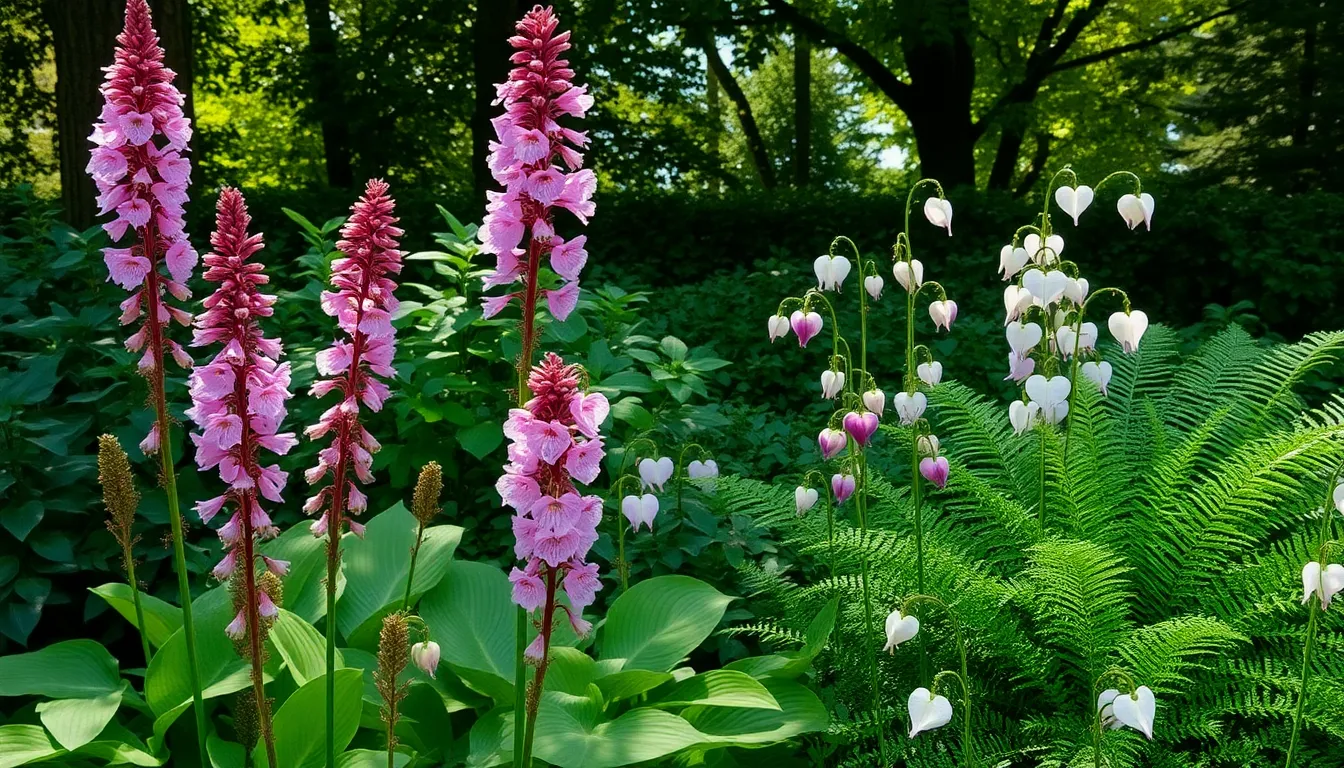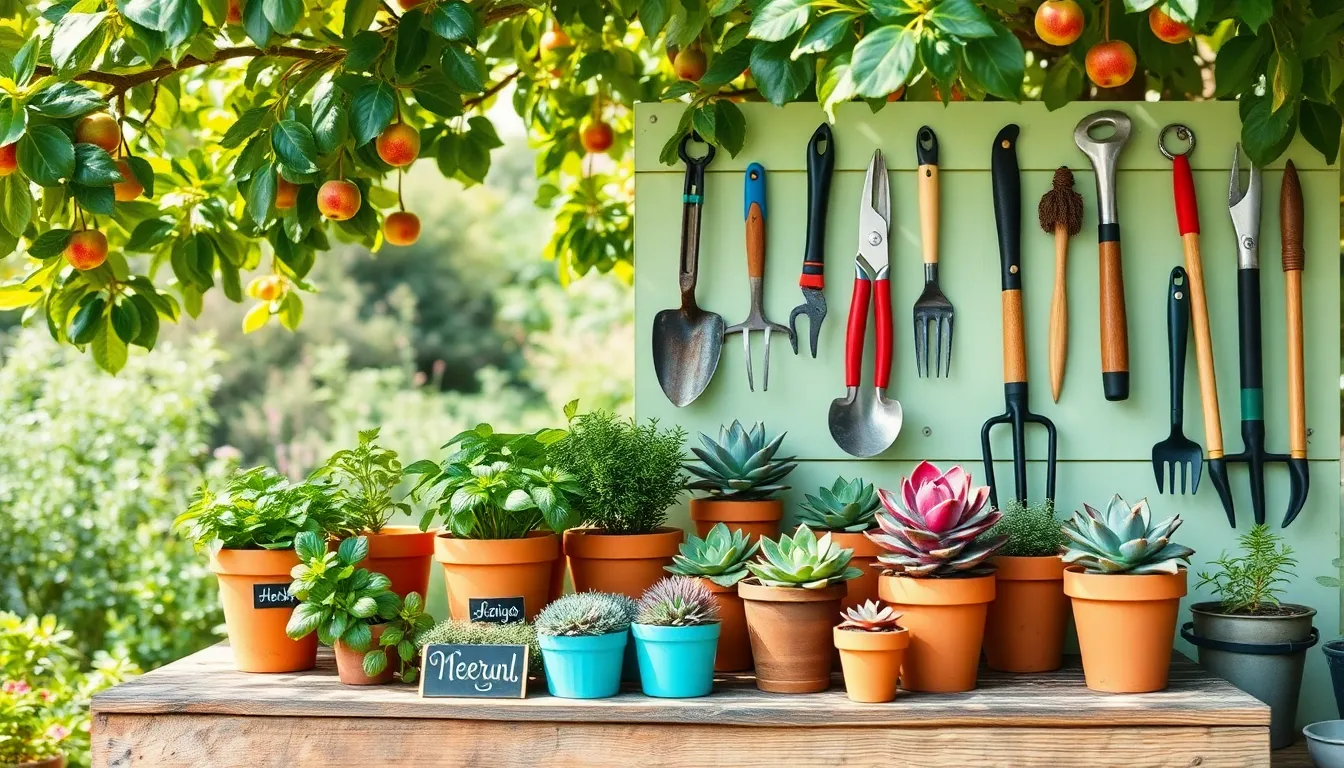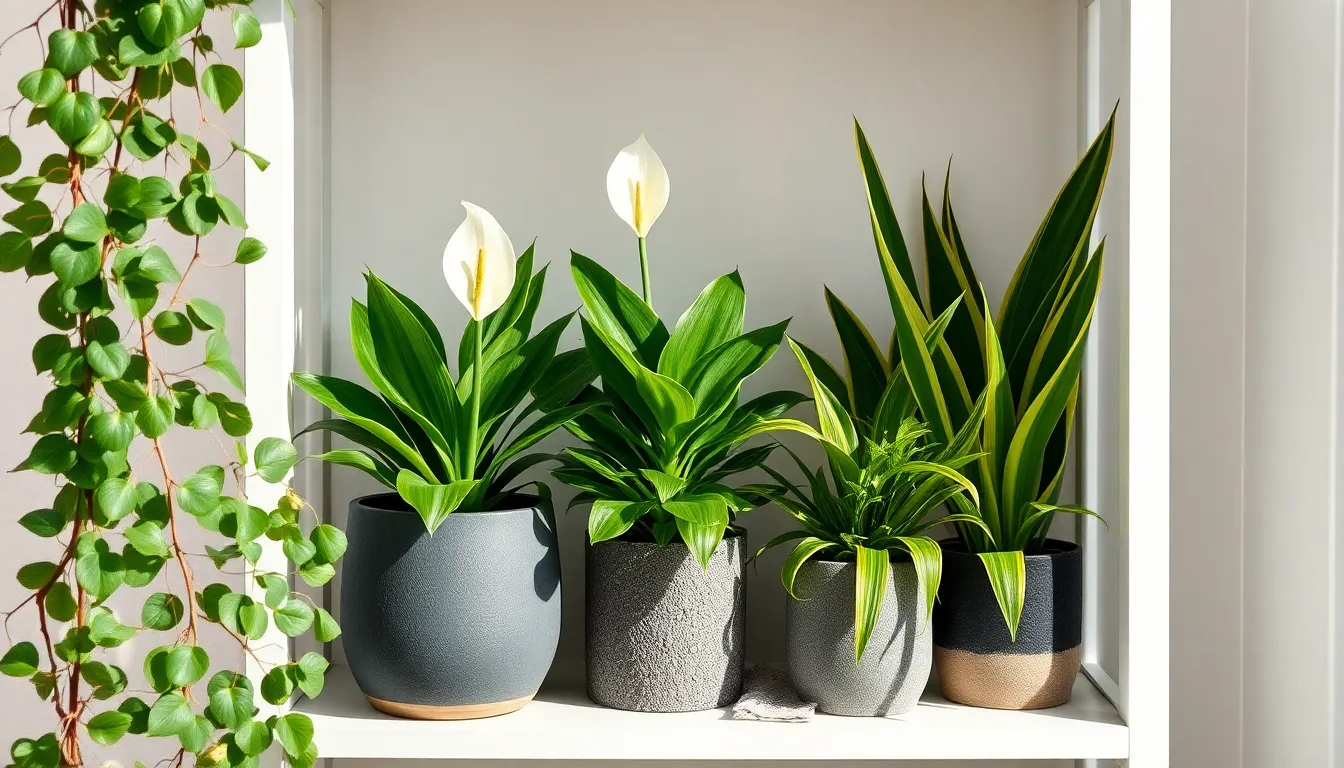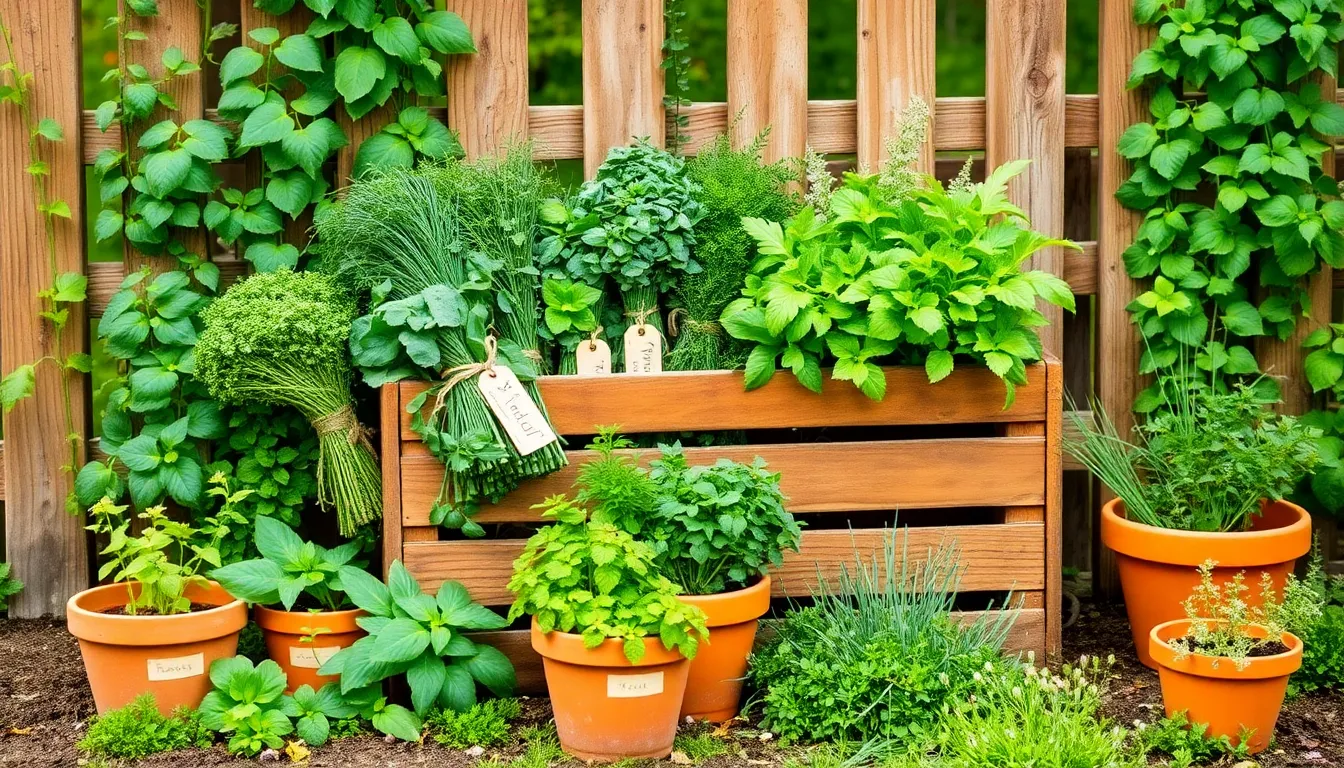Gardening in the shade doesn’t mean sacrificing the vibrant blooms that bring joy and color to your indoor spaces. Whether you’re a budding gardener just starting out or a seasoned plant enthusiast looking to expand your floral collection, exploring the world of shade-loving flowering plants opens up a realm of possibilities that promise lush beauty and satisfaction. Our guide to the “10 Best Flowering Plants for Shady Areas” is your ticket to transforming those dim corners into flourishing, colorful havens.
In this carefully curated list, you’ll discover plants that thrive in lower light conditions, allowing you to cultivate a vibrant indoor garden regardless of your home’s natural lighting. These plants not only enhance the aesthetic appeal of your space but also offer the practical benefit of purifying the air, creating a healthier living environment. Dive into this guide with confidence, knowing that the information provided is designed to empower you to succeed, bringing the joys and rewards of successful gardening right into your home.
Astilbe ‘Fanal’ (Astilbe x arendsii)
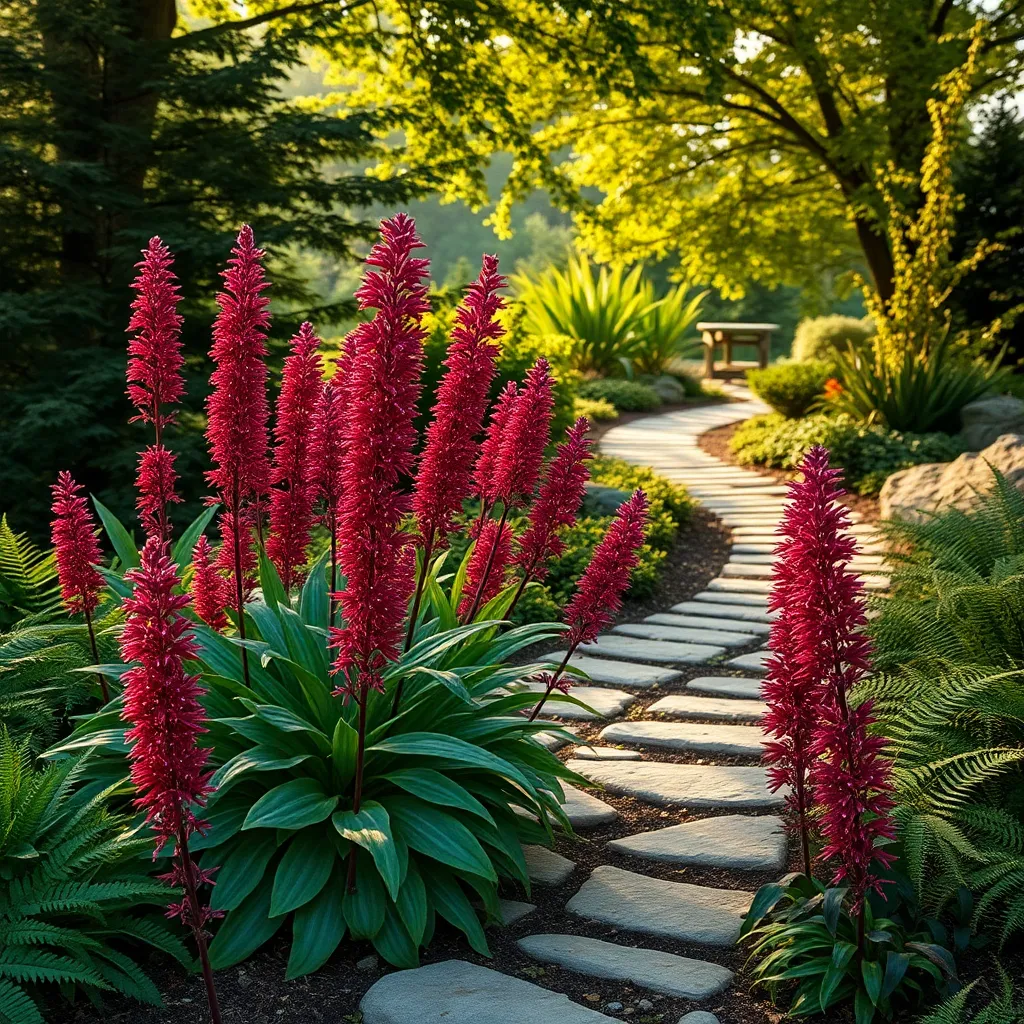
Astilbe ‘Fanal’ is a stunning choice for shady areas, offering vibrant red plumes that can brighten even the darkest corners of your garden. This perennial thrives best in moist, well-drained soil rich in organic matter, making it perfect for woodland settings or shaded borders.
To ensure optimal growth, plant Astilbe ‘Fanal’ in an area with partial to full shade, as too much sun can cause the leaves to scorch. Water consistently, especially during dry spells, to maintain the soil’s moisture level; a thick layer of mulch can help retain moisture and keep the roots cool.
For beginners, it’s important to space the plants about 18 inches apart to allow for adequate air circulation, which helps prevent fungal diseases. Experienced gardeners can propagate Astilbe by dividing mature clumps in early spring or late fall, ensuring a healthy and vibrant display year after year.
If you aim to achieve the most striking display, consider pairing Astilbe ‘Fanal’ with other shade-loving plants like hostas or ferns. This combination not only enhances the visual appeal but also creates a diverse habitat that supports various beneficial insects.
Hellebore ‘Pink Frost’ (Helleborus x hybridus)
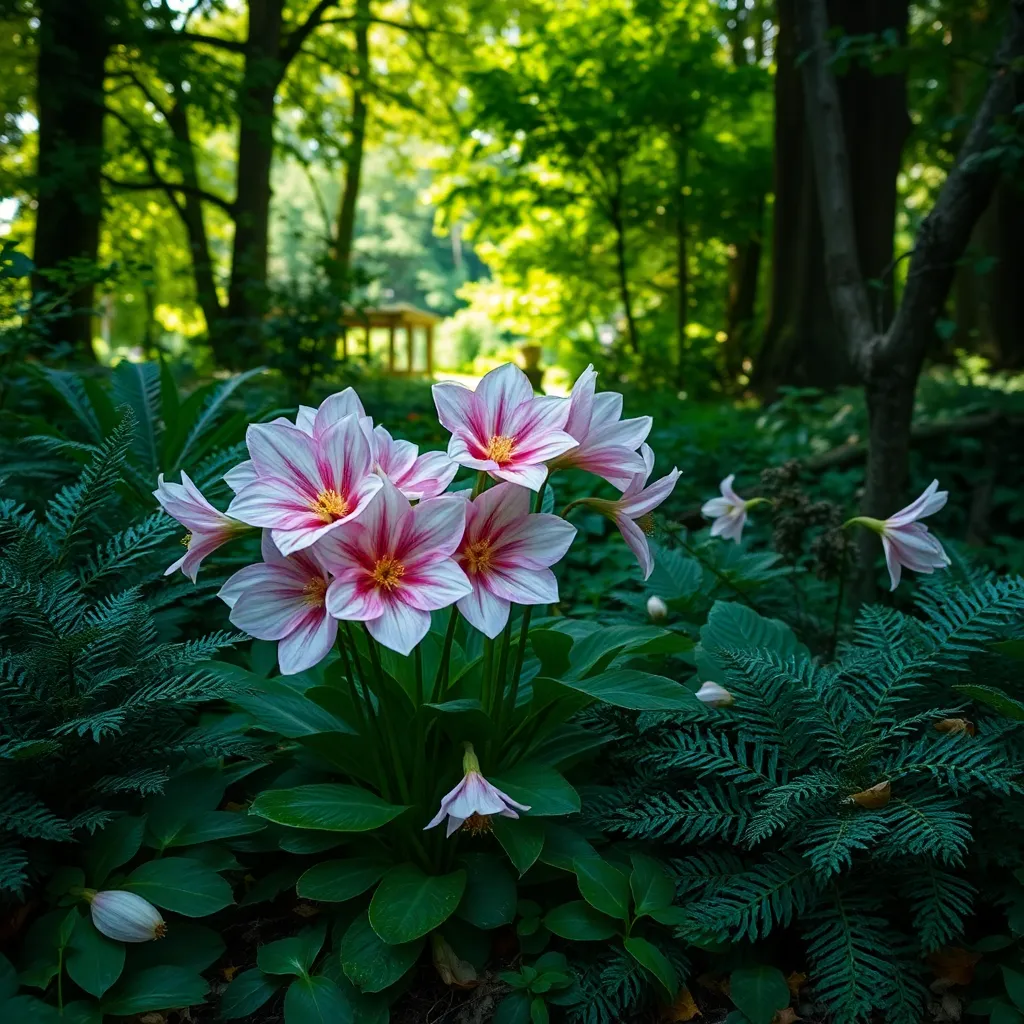
Hellebore ‘Pink Frost’ (Helleborus x hybridus) is an exceptional choice for shady gardens, offering stunning blooms from late winter into early spring. These hardy perennials thrive in partial to full shade, making them perfect for dimly lit areas where other plants may struggle.
To ensure your Hellebore ‘Pink Frost’ thrives, plant it in well-draining soil enriched with organic matter. A slightly alkaline to neutral soil pH is ideal, so consider adding lime if your soil tends to be too acidic.
Water your hellebores regularly, especially during dry spells, but be careful not to overwater as they dislike soggy roots. A layer of mulch will help retain moisture and keep the roots cool, which is crucial for healthy growth.
For those with more gardening experience, consider dividing the plants every few years in early spring to promote vigorous blooming. This not only helps rejuvenate the plant but also allows you to share divisions with fellow gardeners, spreading the beauty of ‘Pink Frost’ across more landscapes.
Bleeding Heart ‘Gold Heart’ (Dicentra spectabilis)
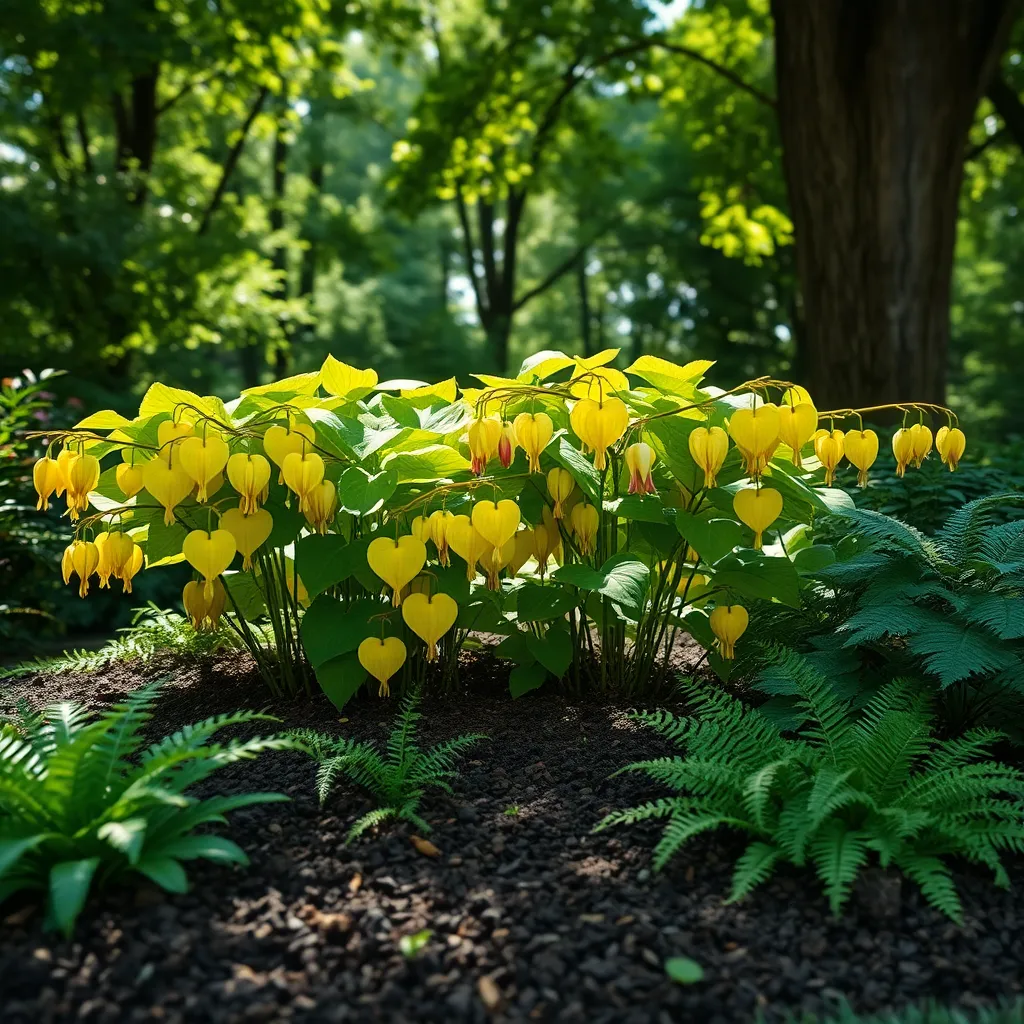
The Bleeding Heart ‘Gold Heart’ (Dicentra spectabilis) is a stunning addition to any shaded garden, known for its heart-shaped flowers and striking golden foliage. These plants thrive in partial to full shade and prefer well-draining, moist soil rich in organic matter.
To plant ‘Gold Heart’, choose a location with consistent soil moisture but avoid waterlogged areas, as this can lead to root rot. Mulching around the base of the plant helps retain moisture and keep roots cool, which is especially beneficial during warmer months.
Bleeding Hearts are relatively low-maintenance, making them perfect for beginner gardeners. Water them regularly, particularly in dry spells, ensuring the soil remains damp but not overly wet, as too much water can damage the plant.
For more experienced gardeners, consider propagating Bleeding Hearts through division to expand your collection. In early spring, gently dig up the plant, and use a sharp knife to separate the roots into sections, ensuring each has a healthy shoot and root system before replanting.
Hosta ‘Guacamole’ (Hosta x fortunei)
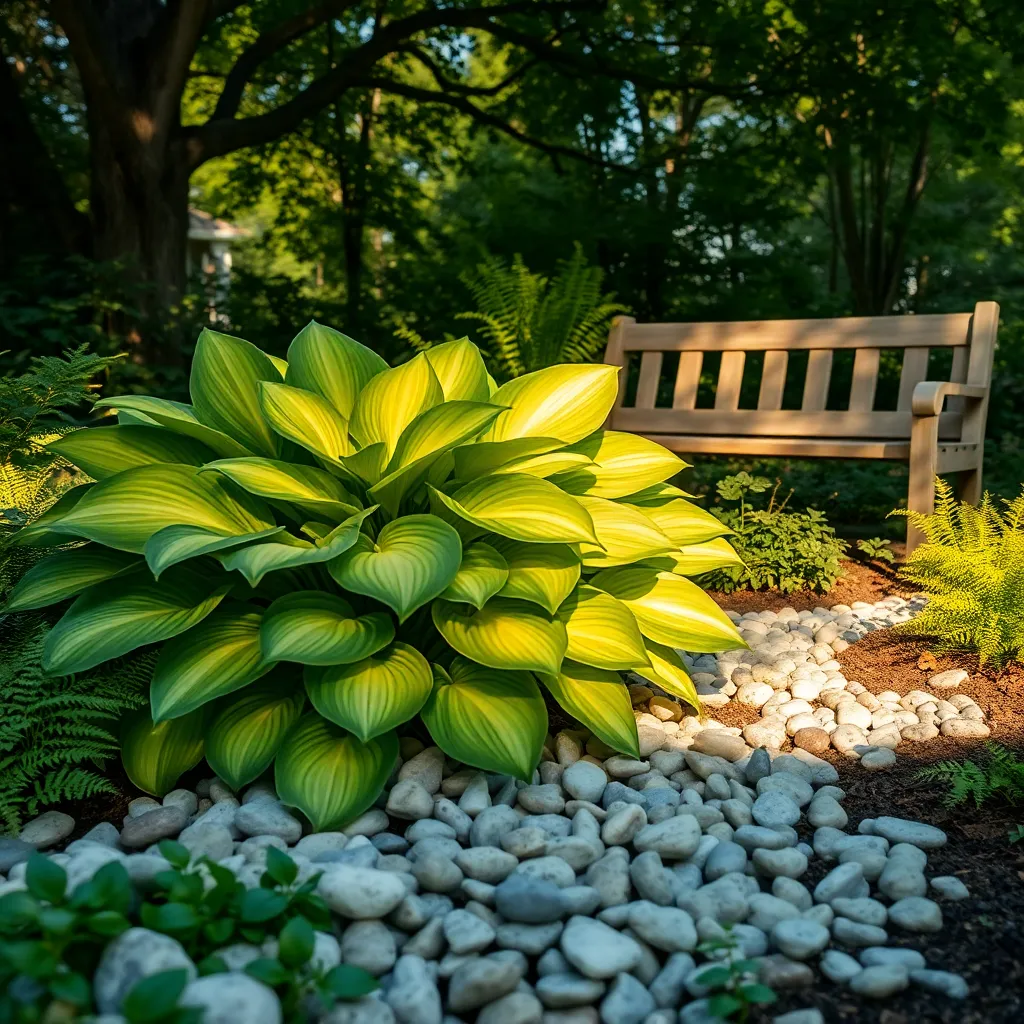
Hosta ‘Guacamole’ is a striking addition to any shady garden with its vibrant, lime-green leaves edged in darker green. This plant thrives in part to full shade, making it perfect for those spots in your garden where sunlight is limited.
For optimal growth, plant Hosta ‘Guacamole’ in well-drained, rich soil that retains moisture without becoming waterlogged. Ensure that you water consistently, particularly during dry spells, to keep the plant lush and healthy.
Beginner gardeners will appreciate the low maintenance nature of this hosta, which requires minimal fertilization—just a balanced slow-release fertilizer in the spring. Experienced gardeners can enhance its performance by dividing the clumps every few years to encourage vigorous growth and prevent overcrowding.
As a bonus, Hosta ‘Guacamole’ produces fragrant, pale lavender flowers in late summer, adding a delightful scent to your garden. To promote flower production, remove spent blooms promptly, which also helps the plant conserve energy.
Toad Lily ‘Sinonome’ (Tricyrtis hirta)
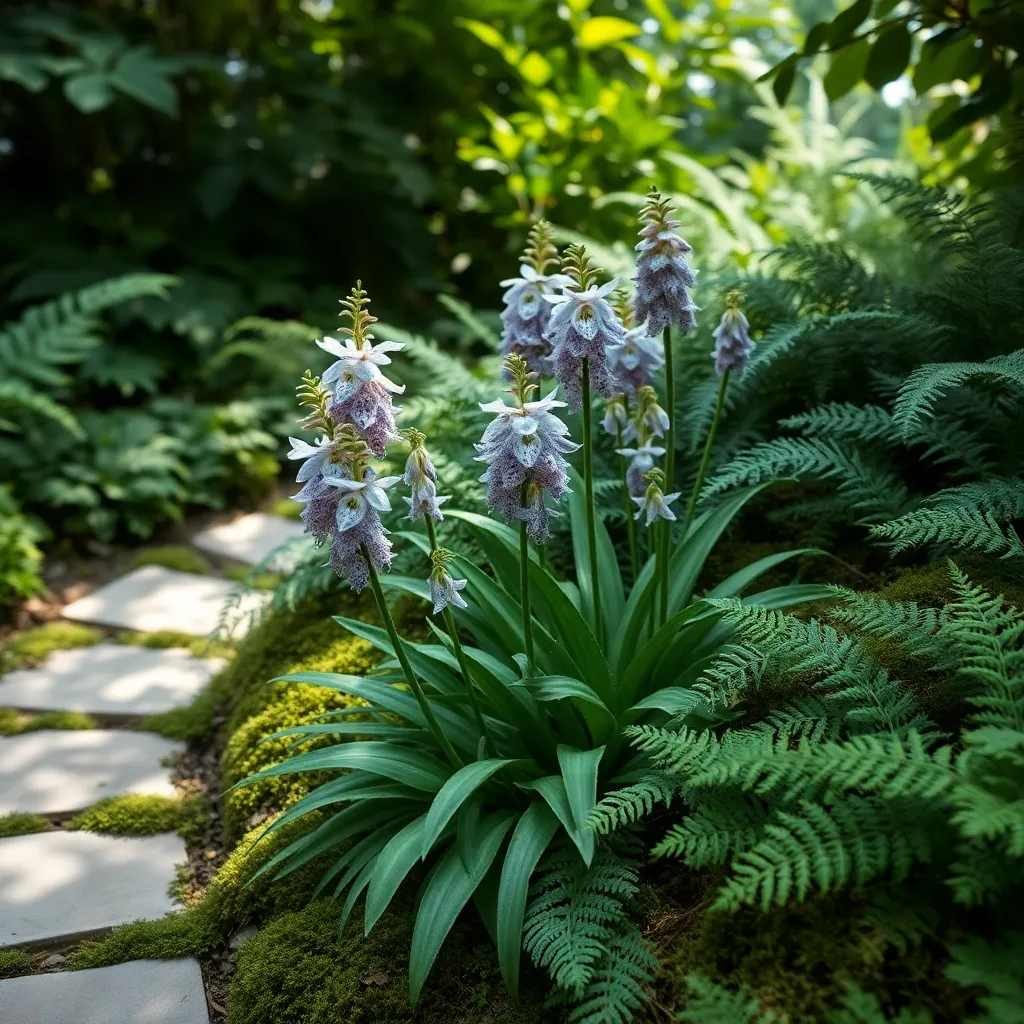
Toad Lily ‘Sinonome’ (Tricyrtis hirta) is a stunning addition to any shady garden, offering unique, orchid-like blooms that capture attention. These plants thrive in the dappled light of woodland settings, making them perfect for spots where many other flowers might struggle to bloom.
When planting Toad Lilies, choose a location with rich, moist soil that drains well. Amend the soil with organic matter such as compost to enhance fertility and moisture retention, ensuring the lilies have the nutrients they need for robust growth.
Water consistently to keep the soil evenly moist, but avoid waterlogging, which can lead to root rot. A layer of mulch around the base will help maintain soil moisture and keep the roots cool during warmer months.
For those in colder climates, consider applying a thick mulch layer in late fall to protect the roots from freezing temperatures. While these plants are generally hardy, providing this extra layer of insulation can help ensure your Toad Lilies return each spring with vigor.
Coral Bells ‘Palace Purple’ (Heuchera micrantha)
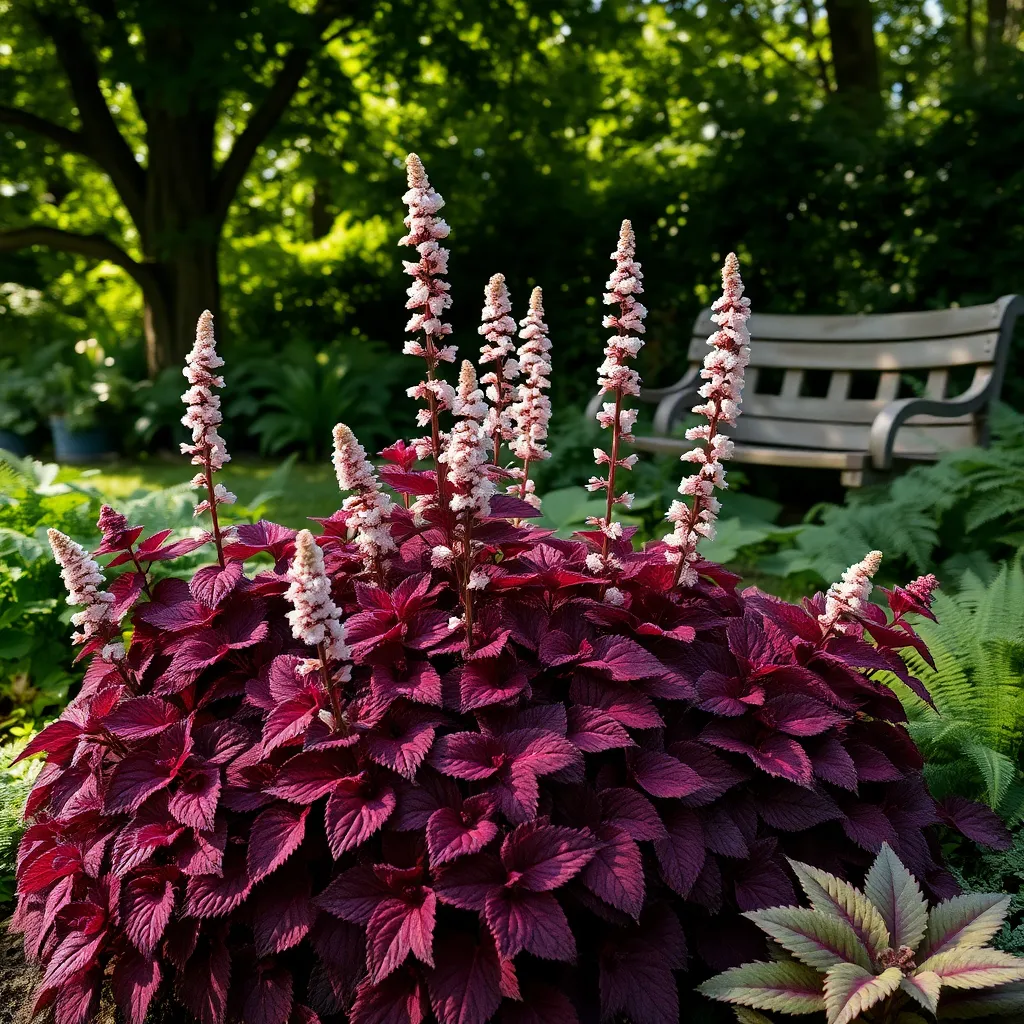
Coral Bells ‘Palace Purple’ (Heuchera micrantha) is a standout choice for shady garden areas, thanks to its striking foliage and delicate flowers. Its deep burgundy leaves provide a dramatic contrast in any landscape, while its tiny, bell-shaped blooms add a subtle touch of elegance.
To thrive, ‘Palace Purple’ prefers rich, well-drained soil with a pH of 6.0 to 7.0. It’s important to maintain consistent moisture levels, but be careful to avoid waterlogged conditions, which can lead to root rot.
For optimal growth, plant Coral Bells in partial to full shade, where they can receive some morning sun but are shielded from harsh afternoon rays. Regularly apply a balanced, slow-release fertilizer in early spring to support healthy foliage and flowering.
Mulching around the base of the plant helps retain soil moisture and suppress weeds, providing a healthier environment for growth. Experienced gardeners may want to divide these plants every three to four years to prevent overcrowding and encourage vigorous new growth.
- Water weekly during dry spells, ensuring the soil stays evenly moist.
- Remove dead or damaged leaves to maintain plant health and appearance.
- Consider planting ‘Palace Purple’ alongside other shade-loving plants like ferns and hostas for a lush, layered effect.
Japanese Anemone ‘Honorine Jobert’ (Anemone hupehensis)
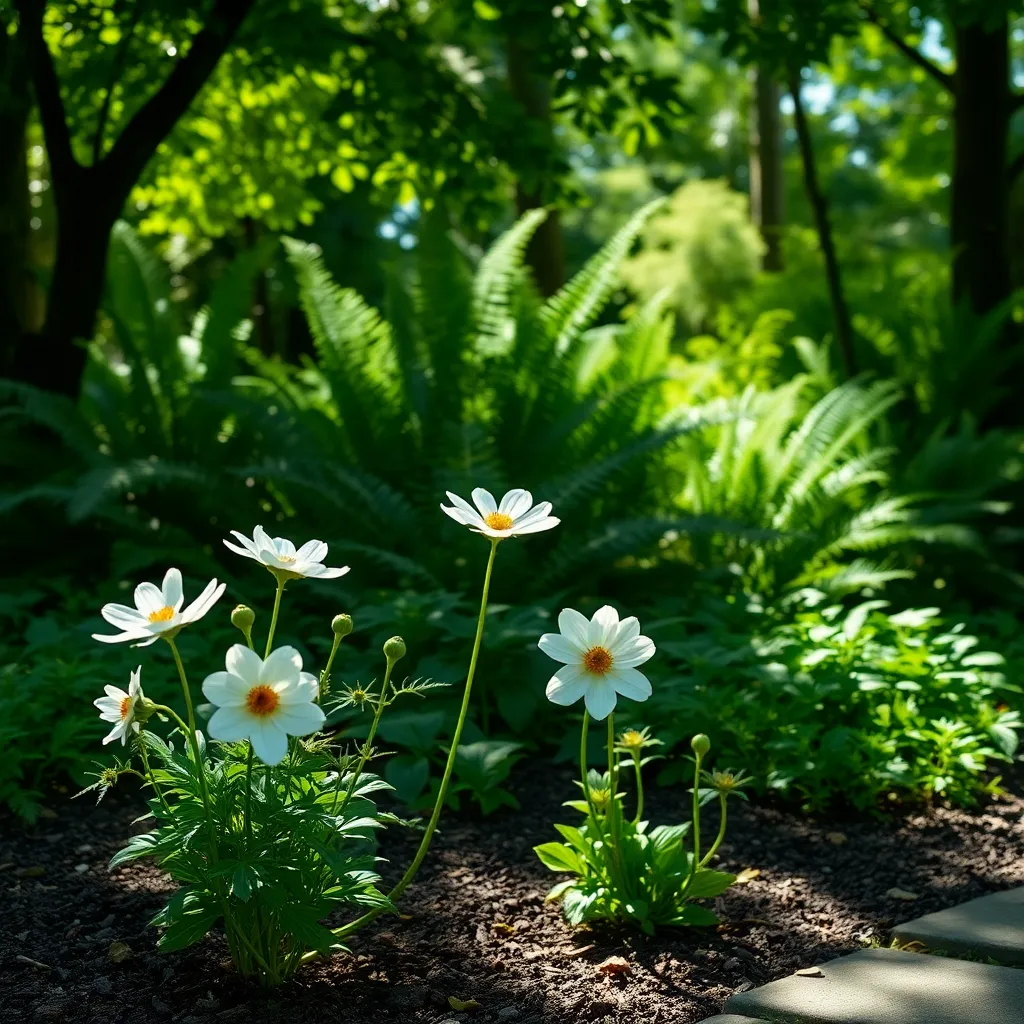
Japanese Anemone ‘Honorine Jobert’ is a standout choice for shaded garden areas with its elegant white blooms and long flowering season. This perennial thrives in partial to full shade, making it an excellent option for brightening up those dim corners of your garden.
When planting ‘Honorine Jobert’, choose a location with well-drained, humus-rich soil to ensure healthy growth. Regular watering, especially in the first growing season, will help establish a strong root system; however, take care not to overwater as Japanese Anemones do not tolerate soggy conditions.
To promote continuous blooming from late summer into fall, deadhead the spent flowers regularly. Additionally, applying a balanced, slow-release fertilizer in early spring can enhance flowering and overall plant vigor.
Advanced gardeners might consider dividing the plants every few years to maintain their vigor and prevent overcrowding. When dividing, ensure each section has several healthy roots and shoots, and replant them at the same depth they were originally growing.
Foamflower ‘Running Tapestry’ (Tiarella cordifolia)
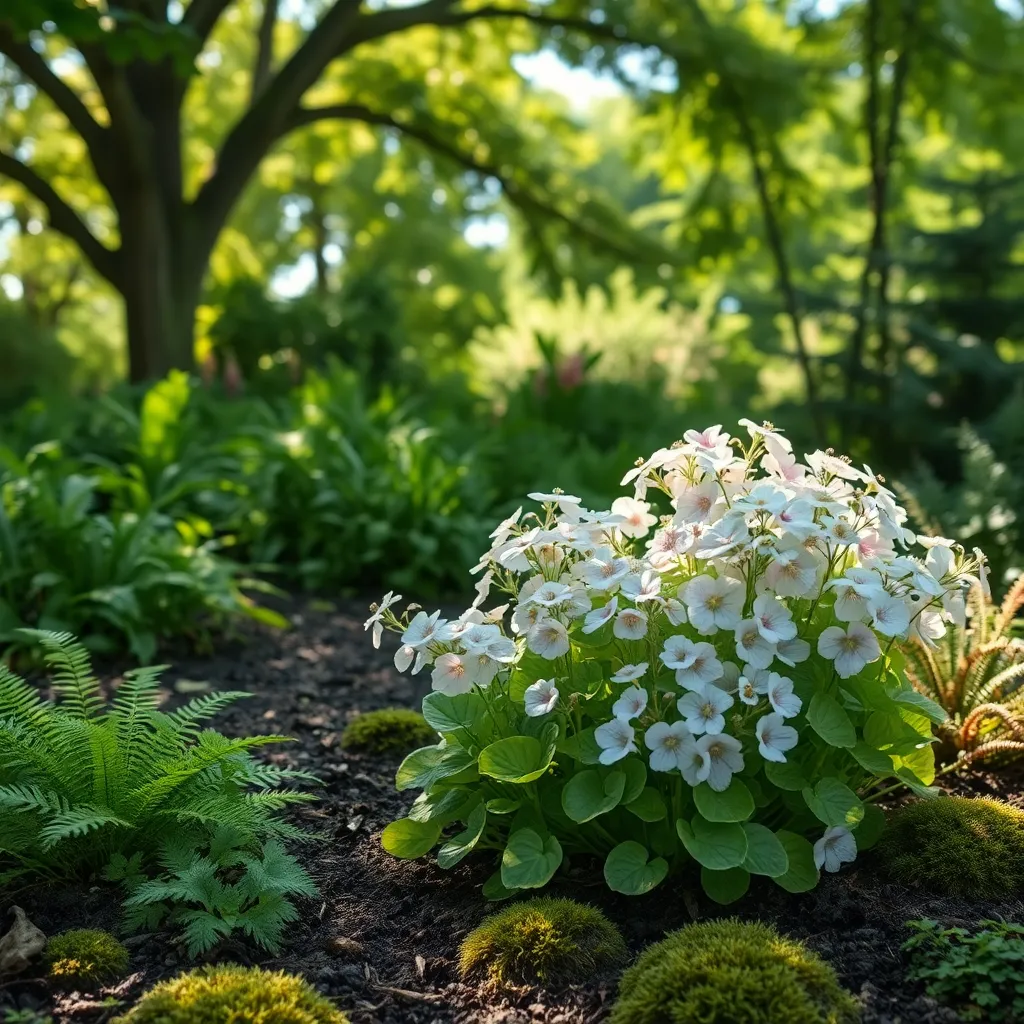
Foamflower ‘Running Tapestry’ (Tiarella cordifolia) is a fantastic choice for shady areas, bringing a lush, textured look with its attractive foliage and delicate blooms. This plant thrives in partial to full shade, making it perfect for those tricky spots under trees or along north-facing walls.
For optimal growth, plant Foamflower in moist, well-drained soil enriched with organic matter, such as compost or well-rotted leaf mold. Ensure the soil remains consistently moist, especially during dry spells, but avoid waterlogging, which can lead to root rot.
Regular watering is essential, particularly in the first year as the plant establishes itself; aim for about one inch of water per week. Mulching around the base can help retain moisture and keep the roots cool, which is crucial for this shade-loving species.
Foamflower is not only low maintenance but also resilient against pests and diseases, making it a worry-free addition to your garden. For a more advanced touch, consider dividing the plants every few years to rejuvenate growth and expand your shady garden area.
Lungwort ‘Mrs. Moon’ (Pulmonaria saccharata)
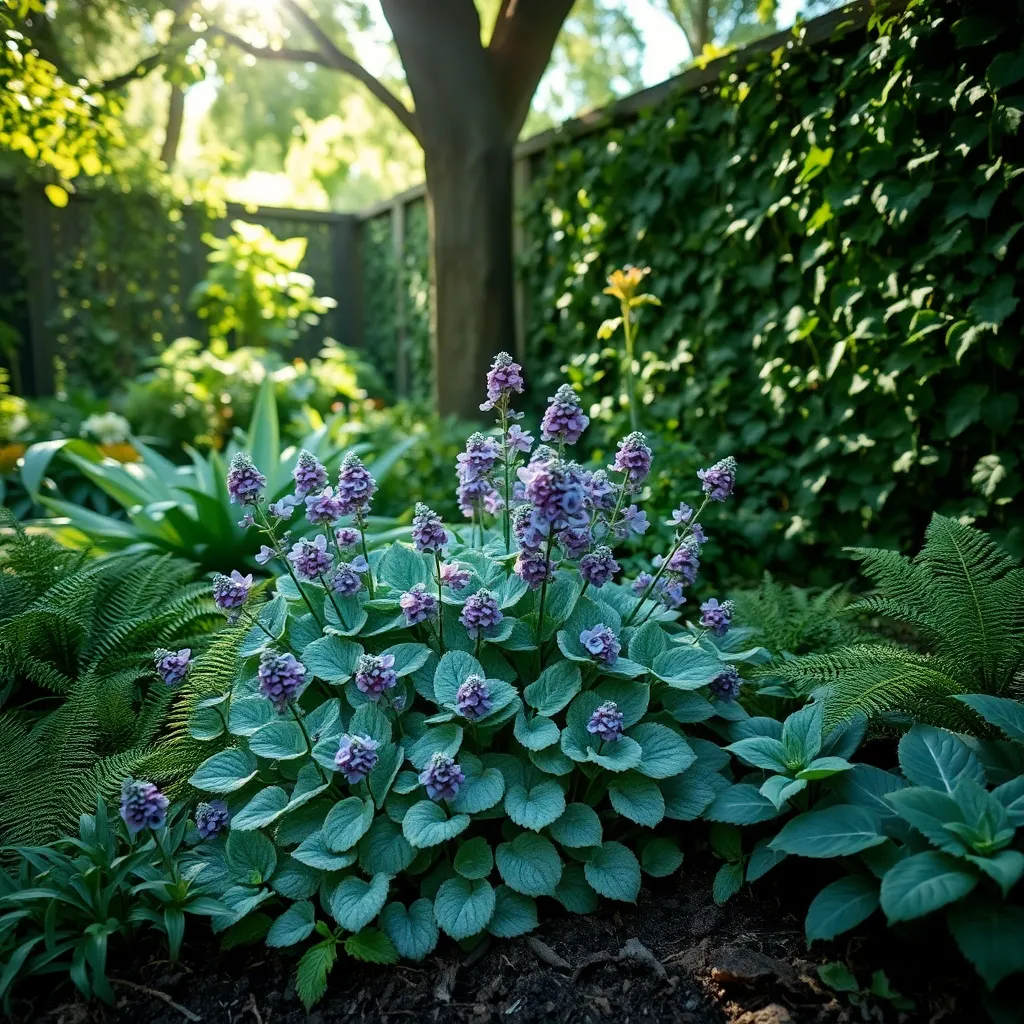
Lungwort ‘Mrs. Moon’ (Pulmonaria saccharata) is a wonderful choice for gardeners looking to brighten up shady spots. With its unique speckled foliage and clusters of pink and blue flowers, it adds both texture and color to any garden.
This plant thrives in partial to full shade, making it ideal for areas that receive limited sunlight. To ensure healthy growth, plant it in well-draining, humus-rich soil that retains moisture without becoming waterlogged.
Watering is essential, particularly during dry spells, to keep the soil consistently moist. However, avoid overwatering as this can lead to root rot, which is a common issue for Lungwort in poorly drained soils.
For those with experience, dividing the clumps every few years can help maintain vigor and encourage more robust blooms. Simply dig up the plant in early spring or fall, and separate the root clumps before replanting.
Solomon’s Seal ‘Variegatum’ (Polygonatum odoratum)
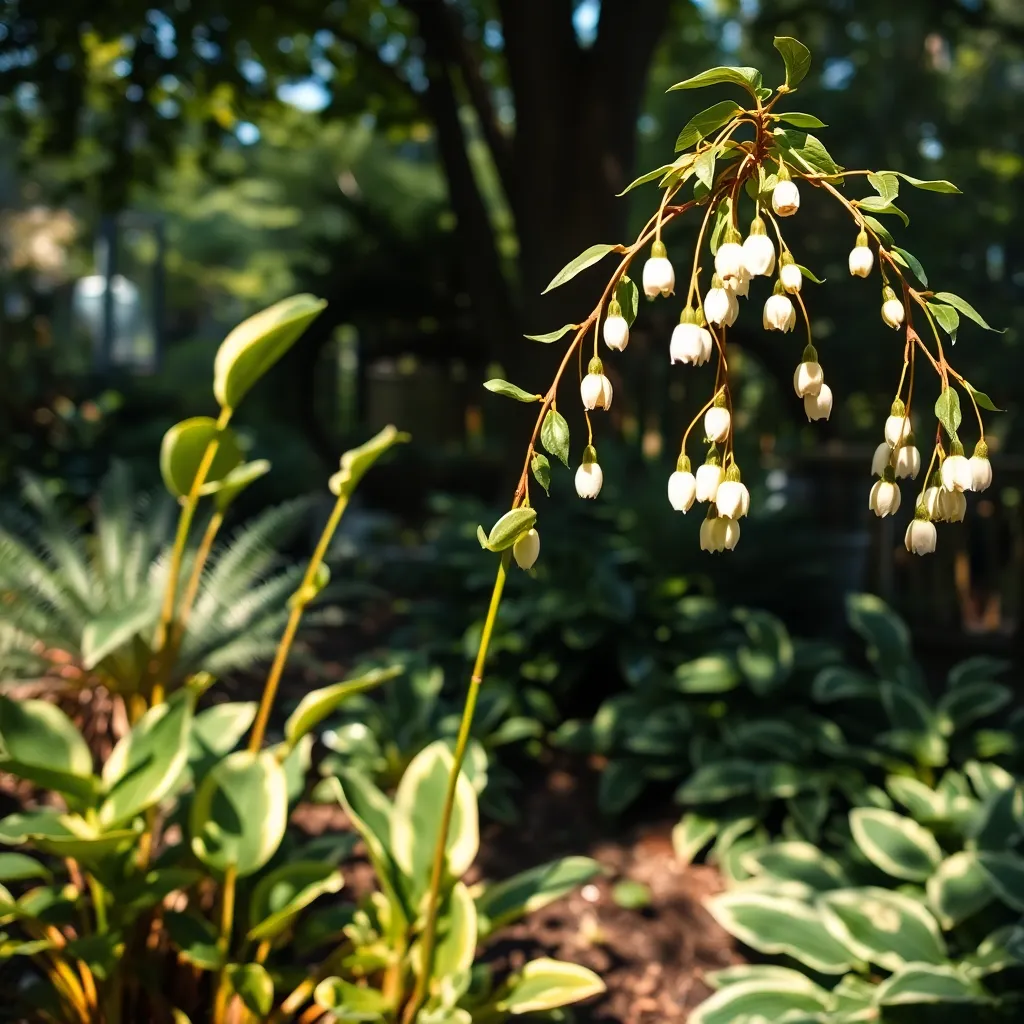
Solomon’s Seal ‘Variegatum’ (Polygonatum odoratum) is a graceful perennial that thrives in shady areas, making it a perfect choice for gardeners with limited sunlight. Its elegant arching stems, adorned with white, bell-shaped flowers in late spring, add a touch of sophistication to any garden.
For optimal growth, plant Solomon’s Seal in well-drained, humus-rich soil. To enhance the plant’s vigor, incorporate organic matter such as compost or leaf mold into the soil before planting.
Watering is crucial, especially during dry spells, to maintain the plant’s lush foliage. Ensure the soil remains consistently moist but not waterlogged, as this can lead to root rot.
To encourage healthy growth, apply a balanced, slow-release fertilizer in early spring. This will provide the necessary nutrients throughout the growing season, ensuring robust blooms and vibrant foliage.
For advanced gardeners looking to propagate Solomon’s Seal, consider dividing the clumps in early spring or fall. This not only rejuvenates the plant but also allows you to expand your garden with this charming perennial.
Conclusion: Growing Success with These Plants
In exploring the lush world of flowering plants that thrive in the shade, we’ve uncovered 10 unique options that can transform your garden into a vibrant sanctuary. Much like the nuances of relationships, each plant offers its own charm and requires specific care to flourish. From the delicate elegance of Astilbes to the versatile beauty of Hostas, and the enchanting allure of Bleeding Hearts, these plants remind us how diversity and understanding can lead to a thriving partnership. We also explored how the resilience of Ferns and the subtle grace of Lungworts parallel the balance of strength and gentleness necessary in any relationship.
As an actionable next step, why not choose one plant that resonates with you and begin nurturing it today? Just as tending to a garden requires patience and dedication, so does nurturing your connection with loved ones.
Remember to bookmark this article for ongoing inspiration and guidance. By revisiting these insights, you’ll be well-equipped to cultivate both your garden and your relationships. With each mindful step you take, you’re paving the way for enduring success and happiness. Let your garden and your relationships bloom with the care and attention they deserve.

